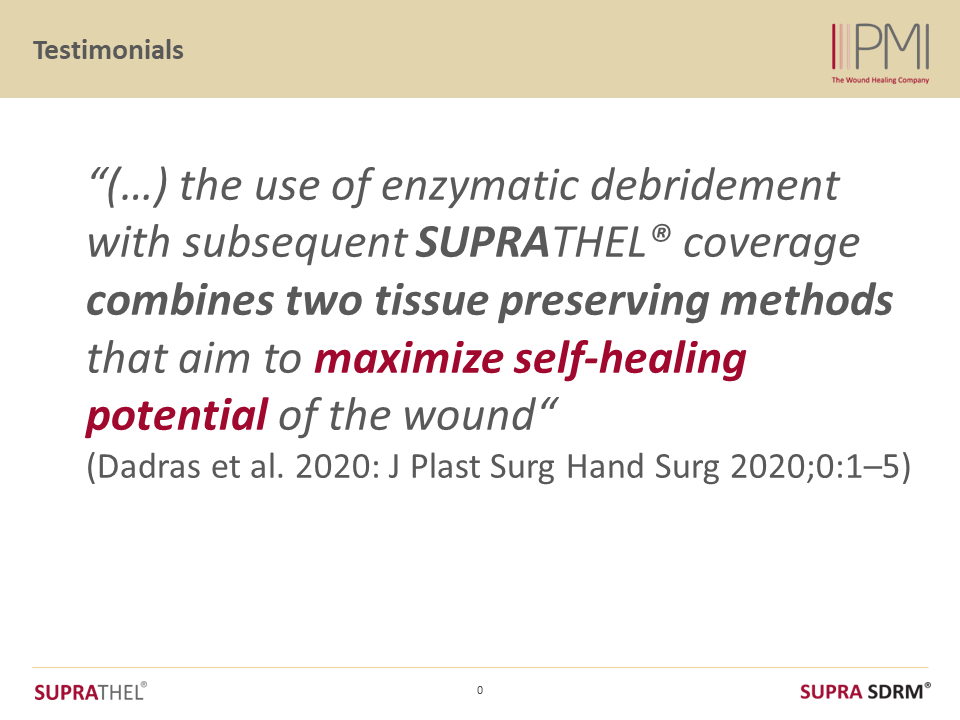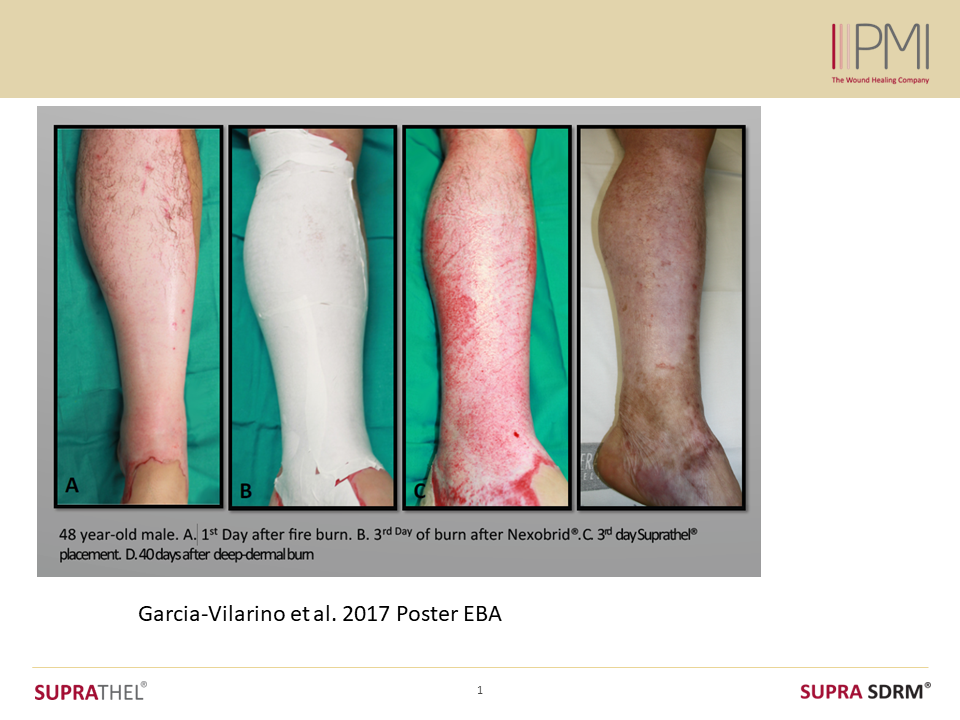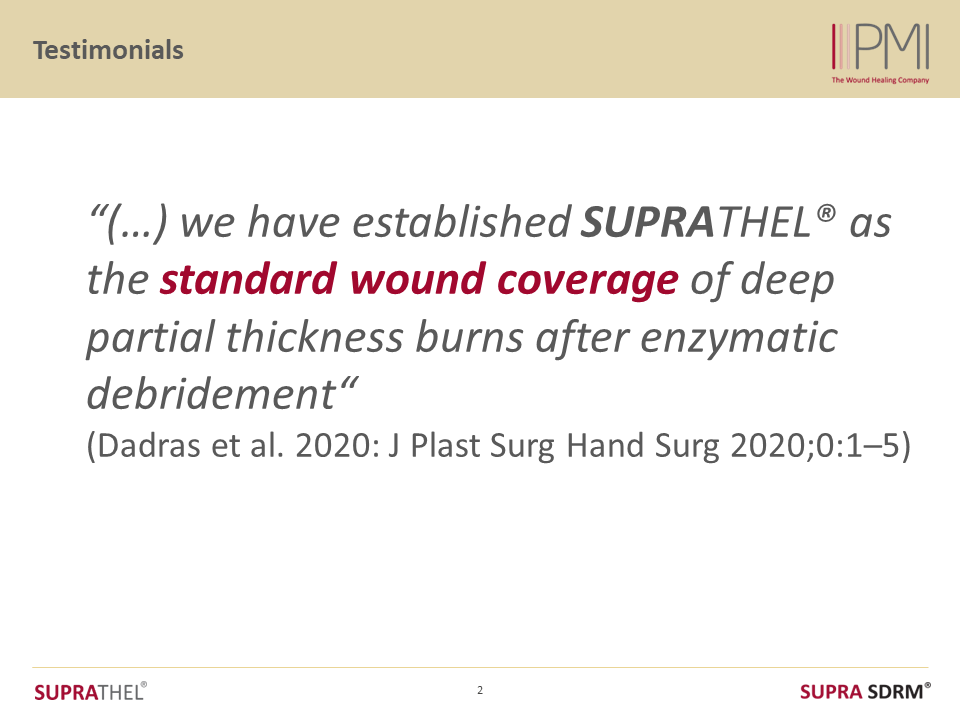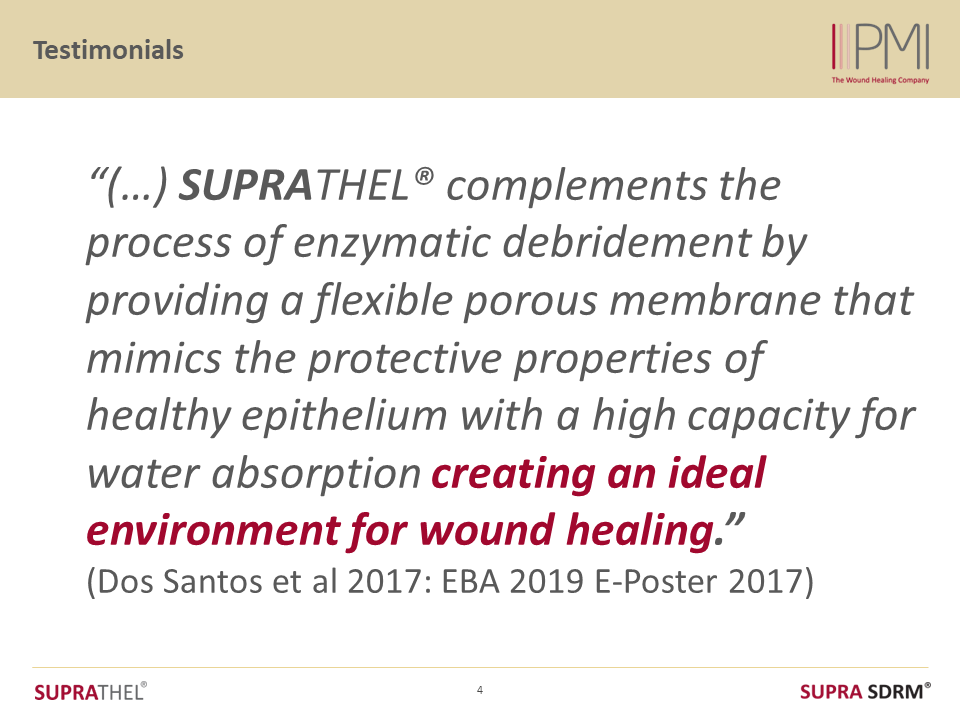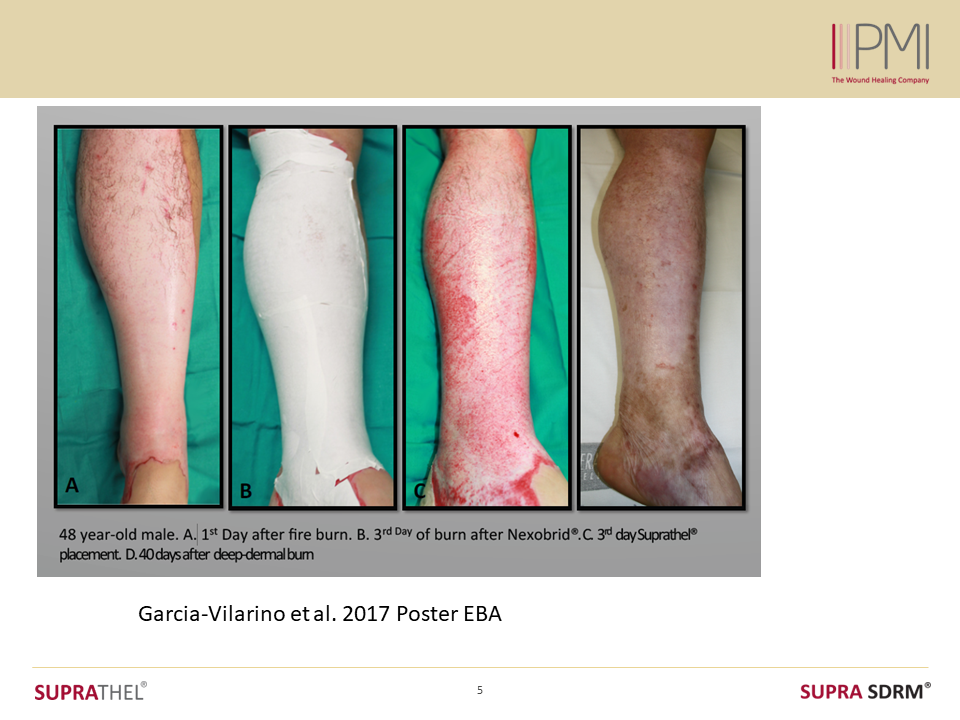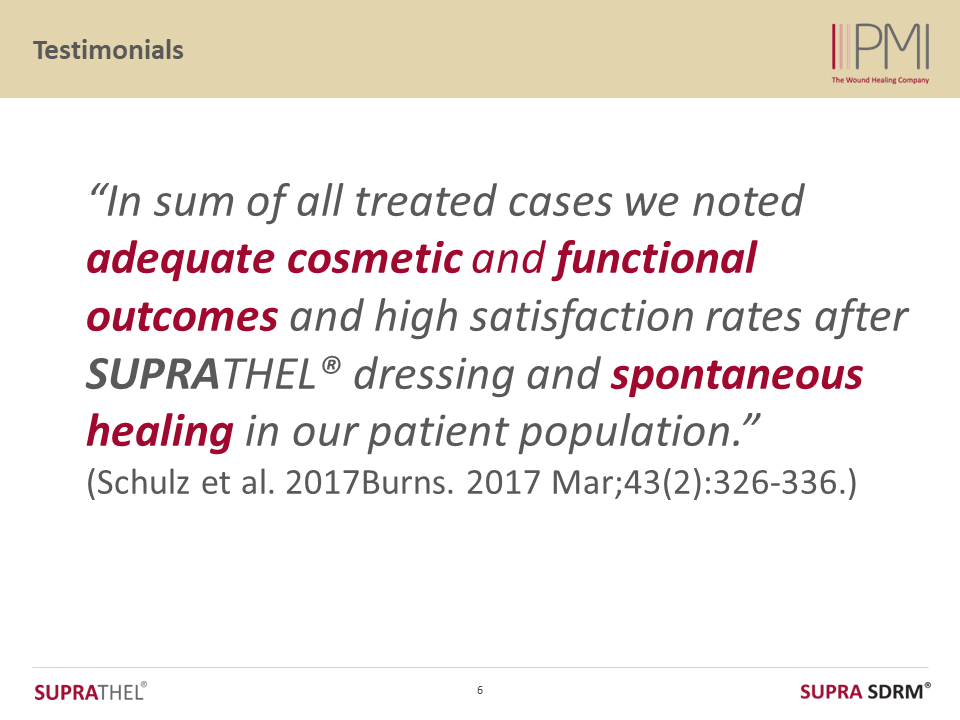Enzymatic debridement has recently gained increasing attention. It has become a reliable tool for selective removal of eschar. Therefore, after this tissue-sparing procedure, the wound covering should be chosen with the utmost care.
Preserved tissue after enzymatic debridement requires best protection of the wound to provide optimal support for healing.
The ideal skin substitute after enzymatic debridement:
- Fast healing after enzymatic debridement
» Average healing time within 28 days, even in deep dermal wounds 1-5 - Spontaneous healing of deep partial thickness burns after enzymatic debridement
» No or less need for skin grafting 1-7 - Good cosmetic results in deep dermal burns, even in case of prolonged spontaneous healing 8, 9
- Reduced inflammatory response 10
- Reduced pain 11, 12
(1) Heitzmann et. al. 2020: Medicina (Kaunas) 2020 Dec 17;56(12):706.
(2) Dadras et al. 2020: J Plast Surg Hand Surg 2020;0:1–5.
(3) Schulz et al. 2017: J Burn Care Res. 2017 Jul/Aug;38(4)
(4) Sander et al. 2019: EBA Poster
(5) Sander et al. 2020 Journal of Burn Care & Research, Volume 41, Issue Supplement_1, March 2020, ABA Poster
(6) Schulz et al. 2017: Burns. 2017 Mar;43(2):326-336. Epub 2016 Oct 27.
(7) Dos Santos et al 2017: EBA 2019 E-Poster 2017.
(8) Keck et al. 2012: Burns. 2012 May;38(3):388-95.
(9) Selig et al. 2013: Wound Repair Regen. 2013 May-Jun;21(3):402-9.
(10) Demircan et al. 2021: Ulus Travma Acil Cerrahi Derg. 2021 Jan;27(1):122-131.
(11) Uhlig et al. 2007: Burns. 2007 Mar;33(2):221-9.
(12) Schwarze et al. 2008: Ann Plast Surg. 2008 Feb;60(2):181-5.






